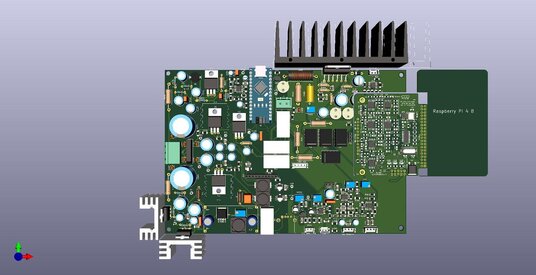Antonio Di Motta
Member
the development of the 4.0 version analyzer continues. Today I am attaching the block diagram of the analyzer as it was designed, suggestions are clearly accepted.
In the meantime, i am finishing making the sound card and the raspberry pi4 block and cooling system as the presence of the sound card very close to the CPU card causes overheating that is not very safe for the operation of both cards.
Thanks for your attention.
In the meantime, i am finishing making the sound card and the raspberry pi4 block and cooling system as the presence of the sound card very close to the CPU card causes overheating that is not very safe for the operation of both cards.
Thanks for your attention.
















